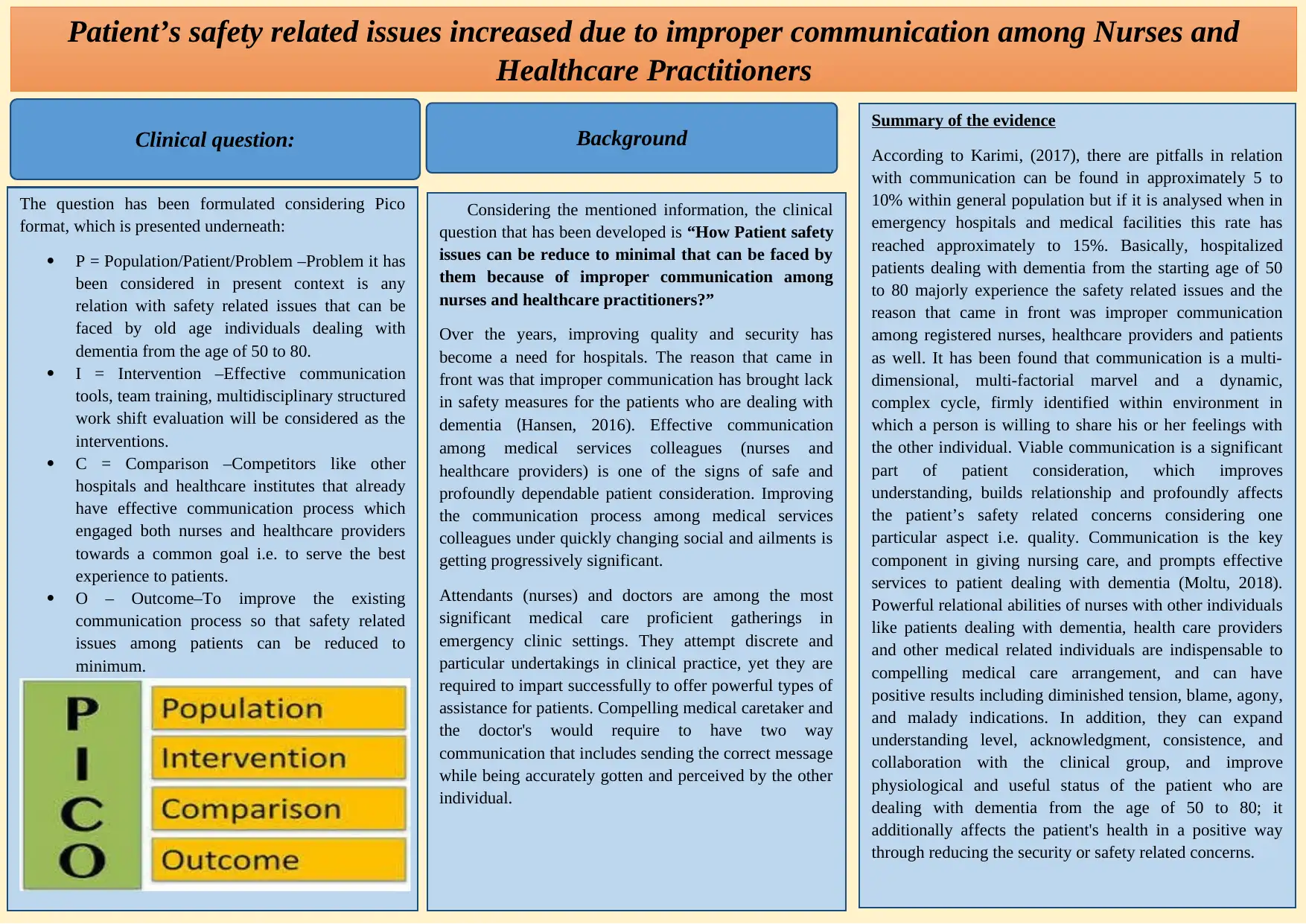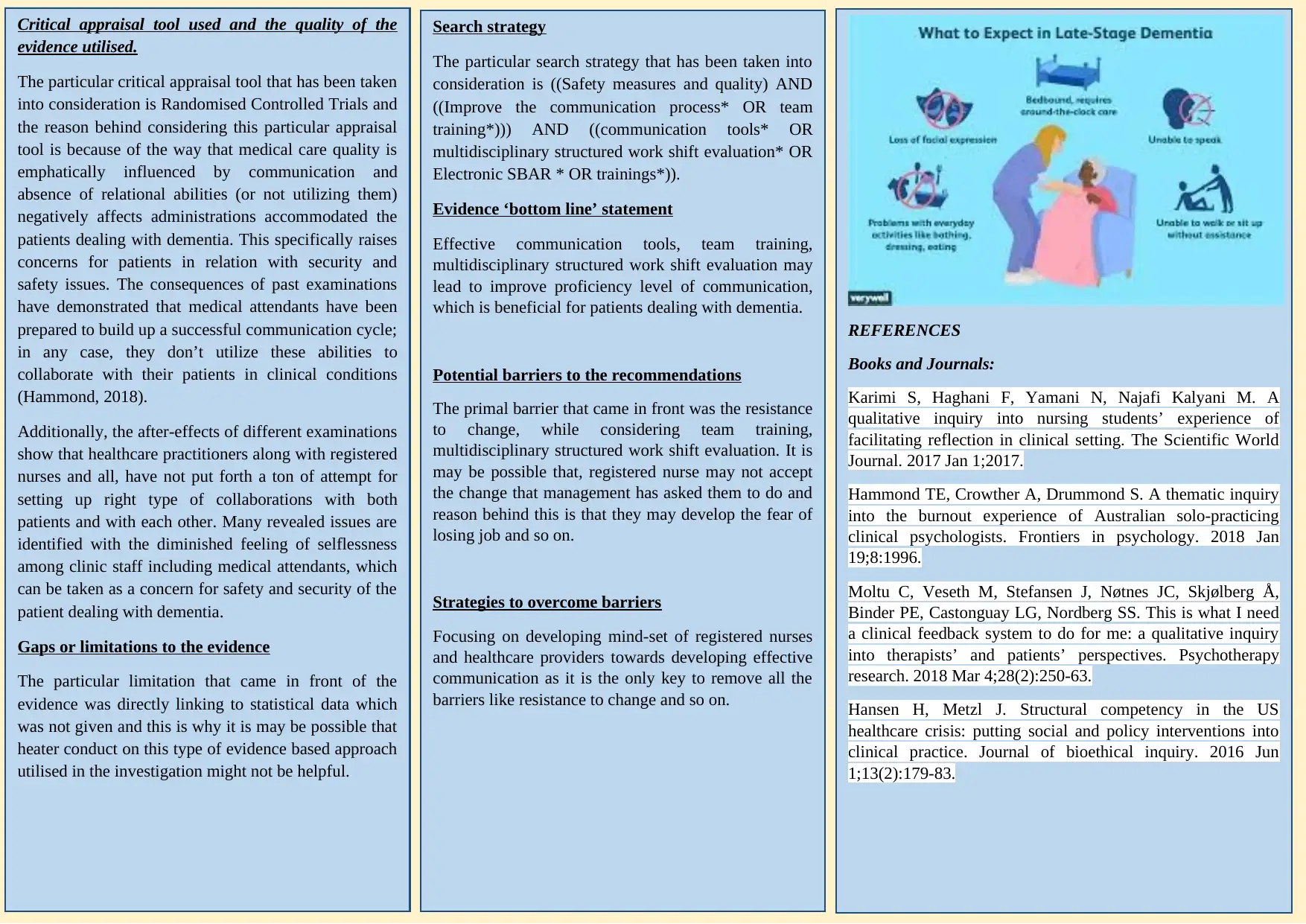Reducing Patient Safety Issues Through Effective Communication
VerifiedAdded on 2023/01/06
|2
|1298
|88
Report
AI Summary
This report addresses the critical issue of patient safety in healthcare, focusing on the adverse effects of improper communication among nurses and healthcare practitioners, particularly concerning patients with dementia. The clinical question posed investigates how to minimize patient safety incidents stemming from communication failures. The report utilizes the PICO framework to analyze the problem, intervention, comparison, and outcome. It highlights that effective communication is crucial for patient care, and that breakdowns in communication can lead to significant safety concerns, especially among elderly patients with dementia. The report summarizes evidence from various sources, including Karimi (2017), Hammond (2018), Moltu (2018), and Hansen (2016), emphasizing the importance of effective communication tools, team training, and multidisciplinary structured work shifts. The report uses the Randomized Controlled Trials critical appraisal tool. It also acknowledges limitations in the evidence, such as the lack of statistical data. Potential barriers to implementing recommendations, such as resistance to change, are discussed, along with strategies to overcome these barriers by focusing on the importance of effective communication. The report concludes with a call to action to improve communication practices to enhance patient safety.
1 out of 2







![[object Object]](/_next/static/media/star-bottom.7253800d.svg)